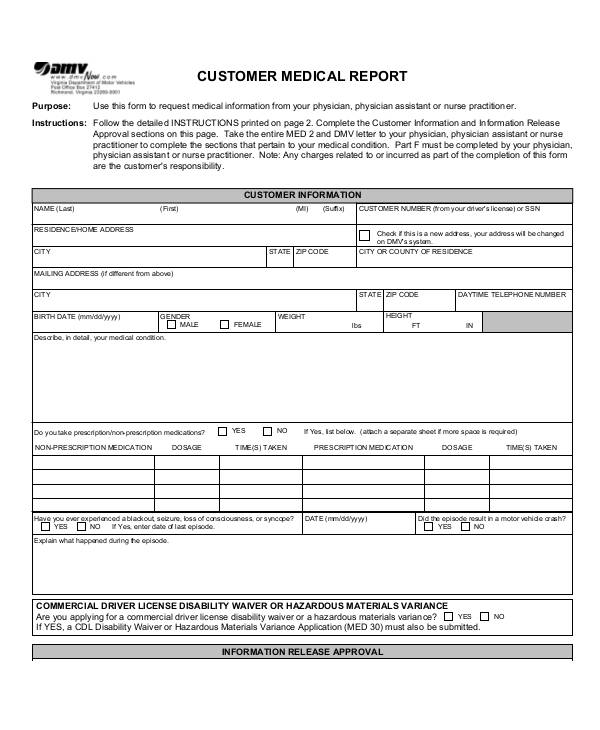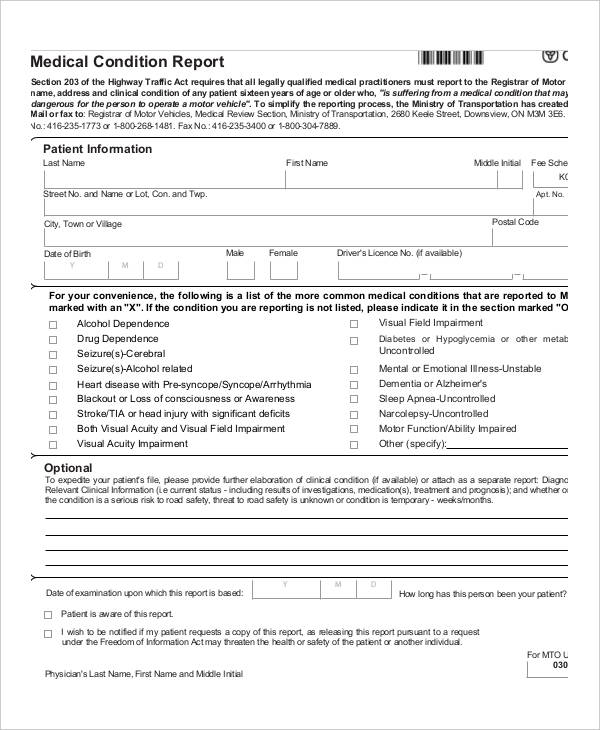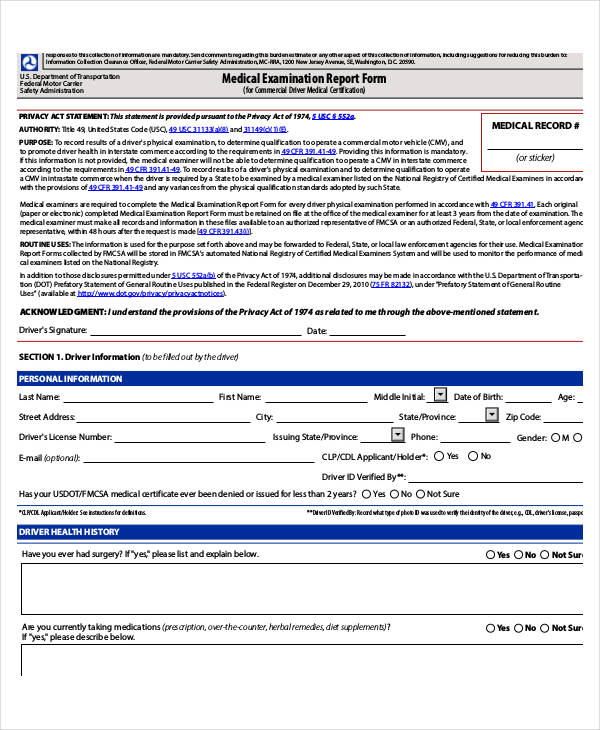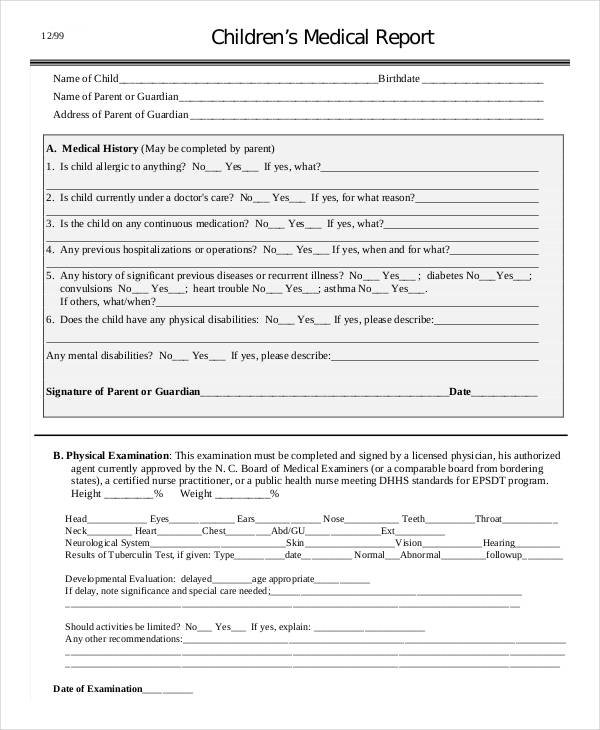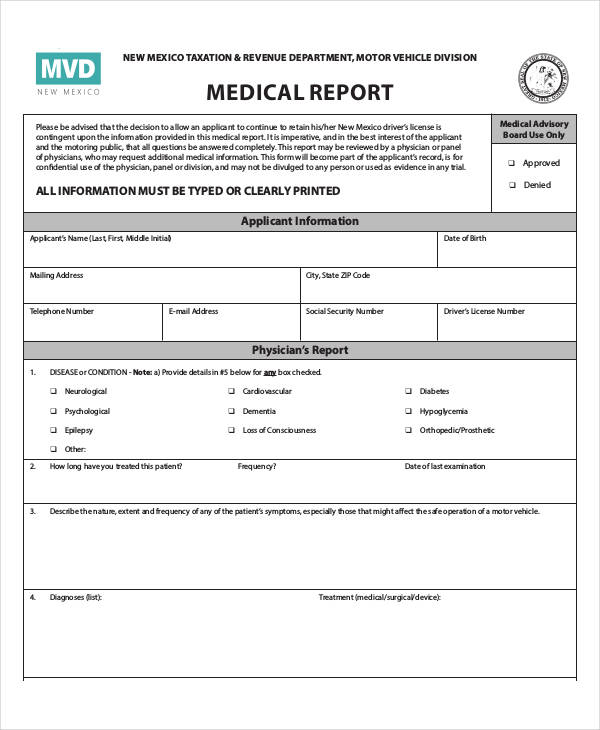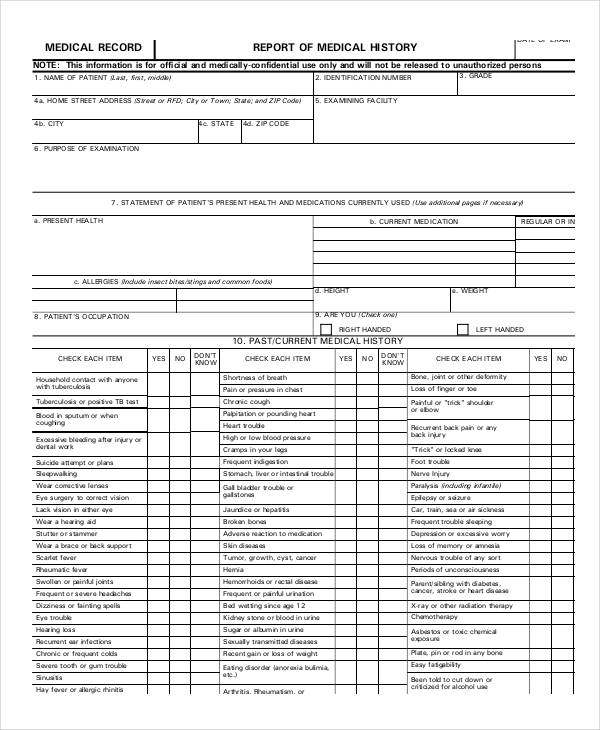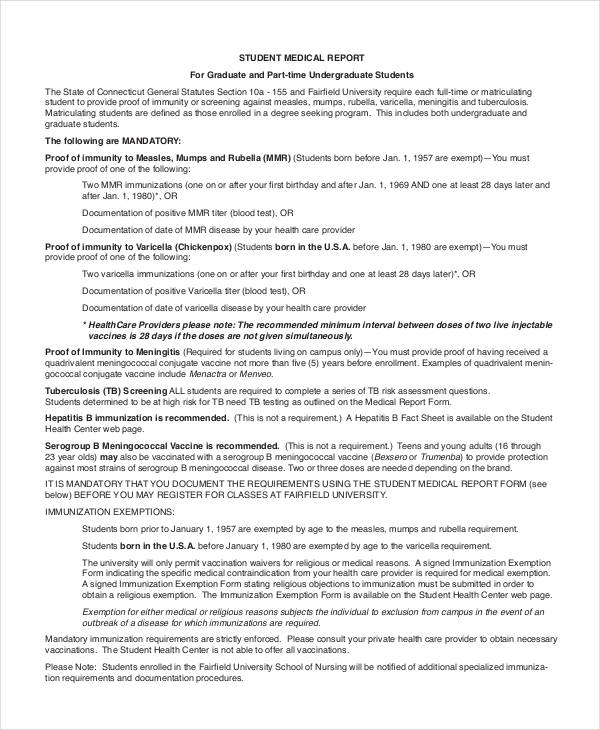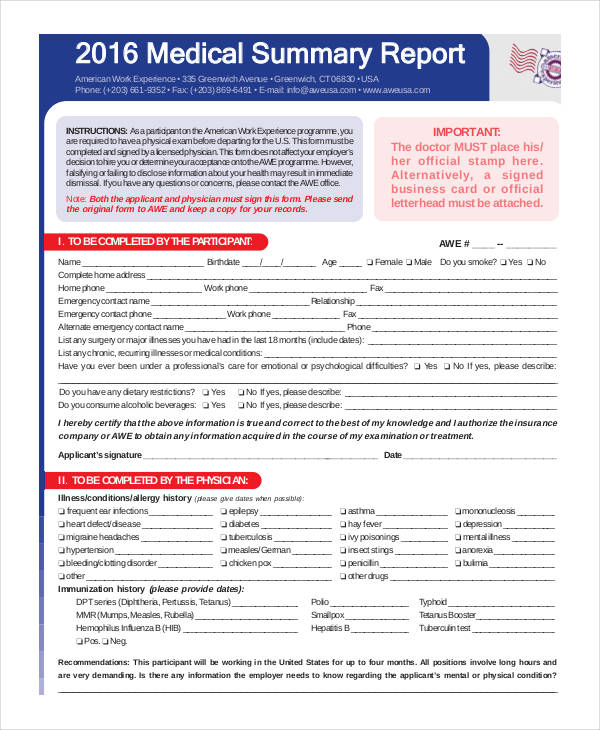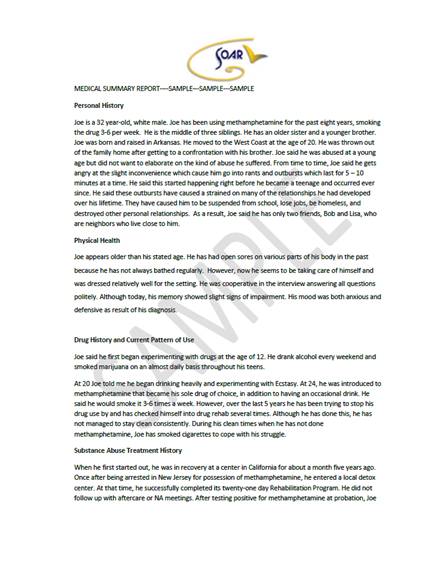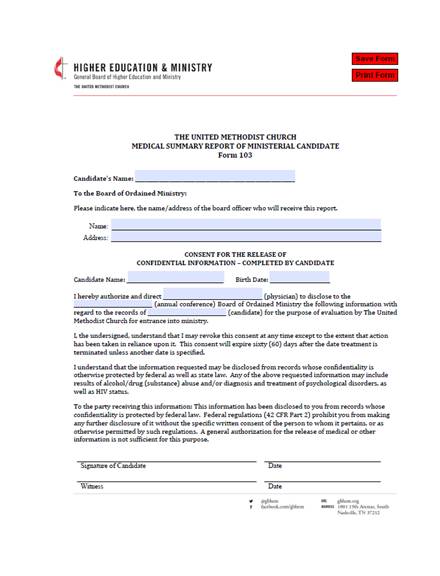12+ Best Medical Summary Report Examples to Download
A medical report template is a document used to provide a summary report of your medical history. You may be required to provide this document when applying for a new job, buying a new car, seeking medical assistance from a medical facility in a different city, and so on. Below are examples of sample templates that you can download and use to present a summary of your medical report when the need for it arises.
1. Hospital Weekly Doctor Medical Report
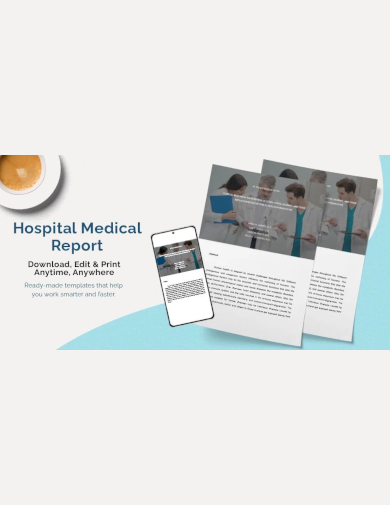
2. Medical Patient Summary Report Template
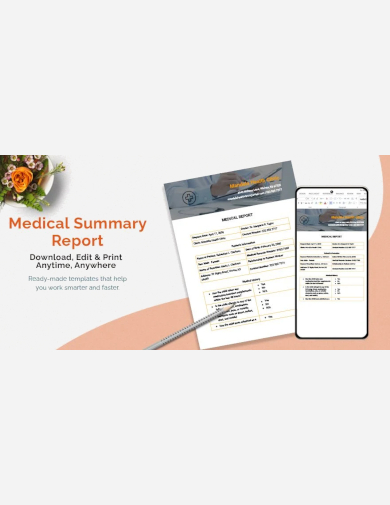
3. Clinical Trail Summary Results Report
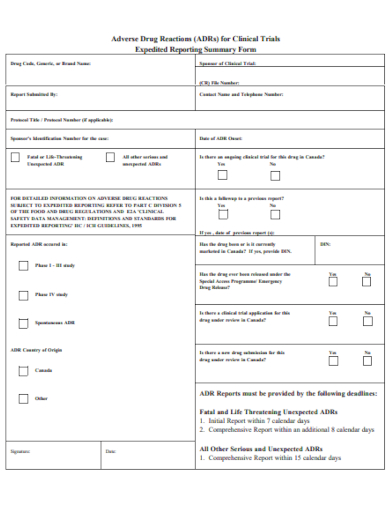
canada.ca
4. Customer Medical Report Example Template
Defining a Medical Summary Report:
A Medical Summary Report (MSR) is a comprehensive document that encapsulates a patient’s medical history, current conditions, treatment plans, and progress notes. It provides a concise yet detailed overview of the patient’s interactions with healthcare systems and professionals. It’s often used to communicate between different healthcare providers, for insurance purposes, or for legal documentation.
Components of a Medical Summary Report:
A Medical Summary Report (MSR) is a comprehensive document that provides an overview of a patient’s medical history and current clinical status. Here are the typical components of an MSR:
Patient Demographics:
- Name: Patient’s full legal name.
- Date of Birth: To identify the age which can be relevant to the medical condition.
- Gender: May influence disease risk and treatment response.
- Identification Number: Such as Social Security or patient ID.
Medical History:
- Past Medical History: Summary of past diseases, surgeries, hospitalizations, and outcomes.
- Family History: Any significant diseases that run in the family.
- Social History: Lifestyle factors such as smoking, alcohol use, occupation, and living conditions.
- Allergies: Listing of all known allergies, especially drug allergies.
Current Clinical Status:
- Chief Complaint: The patient’s primary concern or symptom.
- History of Present Illness: Detailed description of the current complaint, including the onset, duration, and any associated symptoms.
- Medications: Current prescriptions, over-the-counter drugs, and supplements.
Diagnostic Findings:
- Laboratory Tests: Results of blood tests, urine tests, etc.
- Imaging Studies: X-rays, MRIs, CT scans, etc., and their results.
- Specialist Consultations: Opinions from specialist doctors if applicable.
Assessment:
- Diagnoses: List of current diagnoses based on the medical history and diagnostic findings.
- Problem List: A prioritized list of medical issues that need management.
Plan of Care:
- Treatment Plan: Detailed description of the therapeutic approach, including medications, surgeries, therapies, and lifestyle changes.
- Rehabilitation Plan: If applicable, outline the rehabilitation goals and methods.
- Prognosis: Expected outcome of the condition and treatment.
Progress Notes:
- Clinical Progress: Documentation of the patient’s response to treatment over time.
- Updates to Plan of Care: Changes made to the treatment plan based on the progress.
Summary and Recommendations:
- Executive Summary: Brief overview of the patient’s condition, highlighting the most critical aspects of the medical report.
- Recommendations: Next steps in terms of treatment, further testing, or referrals to specialists.
It’s that time in your life when you are ready to own a new car. You are so excited that you can’t wait to go for a test drive and eventually bring your dream motor home with you. However, before a motor dealer accepts your payment and hands you a license and keys, they’ll need to see your medical report. At the end of the day, the motor seller needs to be sure that you are physically fit and healthy to own and drive a car. You can use this medical report template to request a summary of your health status from your physician.
5. Medical Condition Report for Operation Format
The Integral Role of a Medical Summary Report:
Facilitating Continuity of Care:
The primary purpose of a medical summary report is to ensure continuity of care. It provides a comprehensive overview of a patient’s medical history, current condition, and treatment plan, which is essential for seamless care coordination among various healthcare providers.
Informing Clinical Decisions:
Medical summary reports serve as a critical reference point for clinicians, offering the necessary insights to inform and guide clinical decisions. This includes diagnosis, treatment options, and management of the patient’s condition.
Enhancing Patient Communication:
These reports are vital for communicating complex medical information in a structured and understandable format, aiding in discussions with patients and their families about their health status and treatment strategies.
Supporting Administrative Functions:
Medical summary reports are indispensable for administrative purposes, such as billing, coding, and insurance claims. They provide a documented account of the services provided and the medical necessity of those services.
Legal and Compliance Documentation:
In legal scenarios, such as personal injury cases or medical malpractice claims, medical summary reports provide a clear, concise record of medical events and are often used as evidence. They also ensure compliance with medical documentation standards and legal requirements.
Streamlining Review Processes:
For healthcare professionals and institutions conducting audits, quality control, or peer reviews, medical summary reports offer a streamlined way to assess the quality of care and adherence to treatment protocols.
Enhancing Patient Safety:
By documenting a patient’s allergies, past reactions to treatments, and other critical health information, medical summary reports play a crucial role in enhancing patient safety and preventing medical errors.
Facilitating Research and Education:
Medical summary reports can be used for research purposes, helping to identify trends, outcomes, and areas for improvement in patient care. They also serve as educational tools for medical students and trainees.
Buying and owning a car is an achievement. And, if you have the finances, nothing can stop you from purchasing your favorite model. However, your motor dealer may not sell you a car right off the bat. They may request to see a sample report of your medical condition before selling to you. It is important to provide this document when requested. It helps the dealer to determine if really you are medically fit to drive a car. In the end, this report will help the dealership to determine whether you are fit to drive or still need medical attention.
6. Physical Examination Record Report Template
What Constitutes an Effective Medical Summary Report?
Clarity and Conciseness:
An effective medical summary report should be clear and concise, allowing readers to quickly grasp the essential information. Medical jargon should be used judiciously, ensuring that the report is accessible to non-specialists if necessary.
Comprehensive Patient Information:
The report must include comprehensive patient information, such as the patient’s full name, date of birth, medical record number, and the date of the report. This ensures that the report can be accurately matched to the correct patient.
Detailed Medical History:
A thorough medical history is crucial. This includes past medical issues, surgeries, allergies, medications, and family medical history. This information provides context for the patient’s current medical condition.
Current Clinical Status:
The current clinical status, including recent diagnoses, treatment plans, and medications, should be detailed. This section should also cover any recent tests, their results, and their implications for the patient’s care.
Treatment Plan and Recommendations:
A clear treatment plan and recommendations are essential. This should outline the proposed medical interventions, follow-up appointments, and any lifestyle changes or home care instructions.
Accurate and Relevant Test Results:
Test results should be presented accurately and relevantly. Only include tests that are pertinent to the current medical issues to avoid overwhelming the reader with unnecessary data.
Prognosis:
The prognosis, including expected outcomes and potential complications, should be clearly stated. This helps in setting realistic expectations for the patient and their caregivers.
Signature and Credentials:
The report must be signed by the healthcare provider with their credentials and contact information. This adds a layer of accountability and provides a point of contact for follow-up questions.
Patient-Centered Approach:
The report should always keep the patient’s needs and concerns at the forefront. This includes respecting their privacy and ensuring that the report is understandable to those who may be involved in their care.
A medical summary report, as we know it, is a very important note that you should be willing to provide upon request. Anyone engaging you in a professional dealership needs to know that you are healthy and physically fit. The department of transportation takes health and safety concerns seriously. More often than not, they’ll need to see your medical report to determine whether you are fit enough to operate a commercial motor vehicle. Therefore, it is important to talk to your doctor about this and have them provide the necessary information. You can download and use this PDF file to present the report to the relevant department. You may also see medical release form.
7. Child Health Medical Report Form Sample
Do you know that you can download a custom medical examination report and never have to design one from scratch? With that said, here is a simple, one-page PDF file that you can download and use straight away. Both you and your doctor (examiner) will have to fill out this document.
8. Printable Patient Medical Report Template
Essential Elements of Medical Record Reviews:
Purpose-Driven Analysis:
Medical record reviews must be conducted with a clear purpose, whether for quality assurance, legal examination, or clinical activity report summary. The objective guides the depth and focus of the review.
Comprehensive Data Collection:
A meticulous collection of data from the patient’s entire medical history is paramount. This includes hospitalizations, physician notes, diagnostic tests, and treatment outcomes.
Chronological Organization:
Organizing the information chronologically provides a timeline of medical events, aiding in understanding the progression of the patient’s condition and the interventions made.
Attention to Detail:
Attention to detail is critical. Accurate interpretation of medical records can impact patient care decisions, legal outcomes, or insurance claims.
Critical Analysis:
A critical analysis of the medical records is necessary to identify patterns, inconsistencies, or gaps in the medical care provided.
Summary of Findings:
A clear summary of findings should be presented at the end of the review, highlighting the key points and relevant details that support the purpose of the review.
Confidentiality and Compliance:
Maintaining patient confidentiality is non-negotiable, and the review process must comply with HIPAA and other relevant regulations.
Expertise and Objectivity:
The reviewer should have the necessary medical expertise and remain objective, avoiding any bias that could skew the review.
Clear Reporting:
The findings should be reported in a clear, structured manner, using language that is accessible to non-medical professionals if the review is for a broader audience.
Use of Technology:
Leveraging technology for electronic health records can streamline the review process, making it easier to search for and analyze specific data points.
9. Simple Medical History Records Report Template
We know that creating a report template isn’t easy. If anything, it takes a lot of time to put the design and the content together. The best way to save time on design has always been to use a pre-designed template. It’s the same medical case summary with a medical report template. Instead of spending hours behind your computer trying your best to create a template that stands out, you can download this PDF file and use it straight away. Remember, the content of the document should remain confidential between you and the person to whom you submit the file.
10. Sample Student Medical Report Example
How to write a Medical Report?
Writing a medical report involves a structured approach to ensure all relevant clinical information is accurately and clearly presented. Here’s a general guide on how to write a medical report:
Heading:
- Patient’s Name: Confidentiality should be maintained if the report is for third-party use.
- Date of Birth: To help accurately identify the patient.
- Date of Examination: To provide a timeline of the medical evaluation summary.
- Medical Record Number: If applicable, for hospital or clinic records.
- Date of Report: The date the report is written.
Introduction:
- Purpose of the Report: Explain why the report is being written (e.g., for insurance purposes, legal reasons, etc.).
- Requesting Party: Identify who requested the report, if relevant.
Patient Information:
- Chief Complaint: The main reason for the patient’s visit or concern.
- History of Present Illness: A detailed account of the patient’s current complaints, including onset, duration, intensity, and character of symptoms.
- Past Medical History: Any relevant past illnesses, surgeries, or ongoing health issues.
- Medications: List current medications including dosages.
- Allergies: Any known allergies, especially to medications.
Clinical Findings:
- Physical Examination: Document vital signs and findings from the physical exam, organized by system (cardiovascular, respiratory, etc.).
- Diagnostic Test Results: Summarize results from lab tests, imaging studies, etc.
Assessment and Plan:
- Diagnoses: List the diagnoses derived from the clinical findings.
- Treatment Plan: Outline the recommended treatment plan, including medications, therapies, or surgical interventions.
- Prognosis: Provide an opinion on the likely course and outcome of the condition.
Summary and Recommendations:
- Summarize the key points from the report.
- Offer recommendations for future management or assessment.
- Indicate if follow-up is needed, and if so, when and why.
Closing:
- Doctor’s Name and Signature: Ensure the report is signed by the healthcare provider who prepared it.
- Qualifications: Include the credentials of the healthcare provider.
- Contact Information: Provide a way to contact the healthcare provider for clarifications.
Do you know that you must provide a student medical report before joining college or university? The health report is important because the school administration wants to know about the current state of your health before admitting you. According to this sample document, a school may want to know whether you are immune to certain ailments or not. So, it is important to make sure you provide as much information as possible to make your condition understood. Download the sample PDF file and use it to prepare the medical report. This is an all-rounded template, which means it is acceptable in any school. You may also see investigation summary report.
11. Medical Summary Report for Job Hunting
One of the most important things that a potential employer may ask for before hiring is your medical report sample file. But, even if they do not request for it, it is still important to make sure you present the document so they know the kind of person they’ll be working with months and probably years to come. The easiest way to get the medical report ready is to use a pre-built template. This one here is an example of a professionally designed template that you can download, print, make a copy if need be, and then use to prepare the medical report.
12. Medical Treatment Report Summary Template
Crafting a Medical Summary Report: A Step-by-Step Guide
When writing an MSR, it’s important to be clear, accurate, and concise, ensuring that all relevant information is easy to find and understand. It should be tailored to the audience—it needs to be comprehensive enough for a healthcare professional but also accessible for patients and non-medical personnel if necessary. The language should be professional and avoid jargon when not writing exclusively for a medical audience. The MSR should be up-to-date, reflecting the latest entries in the patient’s medical records.
Step 1: Gather Comprehensive Patient Data
Begin by collecting all pertinent patient information, including personal identification, medical history, and any previous and current treatments or medications.
Step 2: Review and Organize Medical Records
Review the patient’s medical records in detail. Organize the information chronologically to provide a clear timeline of medical events and treatments.
Step 3: Summarize Medical History
Create a section dedicated to the patient’s medical history. Include past diagnoses, treatments, surgical procedures, allergies, and any chronic conditions.
Step 4: Detail Current Medical Status
Outline the patient’s current medical status. Describe recent diagnoses, the results of diagnostic tests, and any ongoing treatments or medications.
Step 5: Describe Treatment Plan
Clearly articulate the treatment plan, including medications, therapies, surgeries, or other interventions. Specify dosages, frequency, and duration of treatments where applicable.
Step 6: Include Test Results and Interpretations
Present recent test results, along with interpretations from healthcare providers. Ensure that this information is relevant to the current medical assessment and plan.
Step 7: Provide Prognosis
Offer a prognosis based on the patient’s current condition, treatment responses, and any other relevant factors. This should be realistic and based on available data.
Step 8: Format the Report for Clarity
Use headings, subheadings, bullet points, and tables to make the report easy to navigate. Ensure that each section is clearly labeled and that the information flows logically.
Step 9: Review for Accuracy and Completeness
Carefully review the report to ensure that all information is accurate, complete, and presented in a professional manner. Verify that no essential information is missing.
Step 10: Finalize the Report
Conclude the report with any final recommendations or follow-up actions. Include the name and contact information of the healthcare provider preparing the report, and ensure it is properly signed and dated.
There may come a time when you have to provide a medical case report about your health. In such a case, you may need to write and present your medical summary report to the respective party. Unfortunately, writing this document isn’t often as easy as many people think. While you can write it on your own, you will need the help of your physician to provide accurate information. This PDF example shows what a sample medical summary report looks like. It is a good template to download and read to understand what makes an outstanding report on health and wellness. You may also like to see case study summary
13. Medical Summary Report for School
Medical Report vs Discharge Summary
Medical reports and discharge summaries are both crucial documents in the healthcare process, serving different yet interconnected purposes. Here’s a table differentiating the two:
| Feature | Medical Report | Discharge Summary |
|---|---|---|
| Definition | A comprehensive account of a patient’s medical history and current condition. | A summary detailing the patient’s hospital stay and the care they received upon discharge. |
| Purpose | To document and communicate the patient’s overall medical status, often used for ongoing care, consultation, and insurance purposes. | To provide a synopsis of the hospitalization, including treatment and follow-up care instructions, primarily used to bridge hospital care with post-discharge care. |
| Content | – Patient’s personal and demographic information – Detailed medical history – Full list of current medications – All diagnoses and treatments – Progress notes – Special considerations – Future care needs | – Date of admission and discharge – Reason for hospitalization – Treatments and procedures performed – Patient’s condition at discharge – Specific discharge instructions – Follow-up care plan |
| Frequency of Updates | Updated regularly to reflect ongoing care and changes in the patient’s condition. | Generated once at the time of patient discharge from a healthcare facility. |
| Time Span Covered | Can encompass the entire medical history of the patient. | Covers the specific period of a patient’s hospital stay. |
| Used by | A broad range of healthcare providers for continued patient care management, specialists, GPs, and insurance companies. | Physicians, nurses, patient care coordinators, and the patient for immediate post-discharge care. |
| Legal Importance | Serves as a legal document in chronic care management and insurance claims. | Critical for ensuring continuity of care post-discharge, and in legal contexts related to the hospital stay. |
| Accessibility to Patient | Usually available to the patient upon request for their personal records or for sharing with other healthcare providers. | Often given directly to the patient or their caregiver at discharge to ensure understanding of care instructions. |
| Structure and Length | Can be extensive, including many details and medical jargon, as it’s often used by medical professionals. | Typically more concise, focusing on the hospitalization and providing clear instructions for aftercare. |
| Follow-up | May outline the need for follow-up but doesn’t usually include specific details since it is not tied to a particular hospital stay. | Includes detailed follow-up care plans, appointments, medication changes post-discharge, and other recommendations. |
Both the medical report and discharge summary are essential for ensuring quality continuity of care, with the medical report providing an ongoing record and the discharge summary acting as a transitional document as the patient leaves the hospital setting.
Who prepares a Medical Summary Report?
A medical summary report is typically prepared by healthcare professionals, such as physicians, nurses, or medical record technicians, who have access to a patient’s medical history and current health information. These professionals ensure the report is accurate, comprehensive, and reflective of the patient’s medical journey.
What role does a Medical Summary Report play in patient care?
A Medical Summary Report plays a crucial role in patient care by providing a comprehensive overview of a patient’s medical history, current condition, and treatment plan, facilitating continuity of care, informing clinical decisions, and ensuring all healthcare providers are aligned in their understanding and approach to a patient’s health management.
How often should a Medical Summary Report be updated?
A Medical Summary Report should be updated whenever there is a significant change in the patient’s condition, treatment, or when new diagnostic information becomes available. Regular updates after major appointments, procedures, or at set intervals, such as annually, ensure the report remains current and useful for ongoing patient care.
Can patients access their own Medical Discharge Summary Report?
Yes, patients have the right to access their own Medical Discharge Summary Report. This document is provided upon discharge summary from a hospital or healthcare facility, and patients can request a copy for their records. It’s an important part of patient rights and healthcare transparency.
What privacy laws protect Medical Summary Reports?
The Health Insurance Portability and Accountability Act (HIPAA) in the United States protects the privacy of Medical Summary Reports. It sets standards for the security of electronic protected health information and dictates how personally identifiable information maintained by the healthcare and healthcare insurance industries should be protected from fraud and theft.
To ensure that a church remains a peaceful place of worship, ministry management always do the best possible to make sure leaders are fit to perform their duties. Take the music department, for example. It is the responsibility of the team leader to ensure that the church band has the skills required to lead people in praise and worship. Another important thing to check is the medical report of individuals who want to get into the ministry. Since the management in your church may ask for your health sample report before ordaining you to serve, consider using this PDF template to provide the information.



